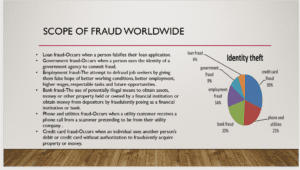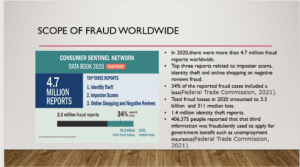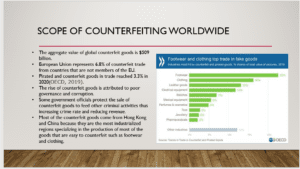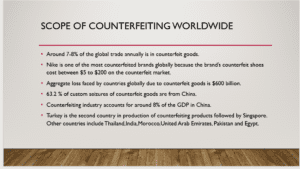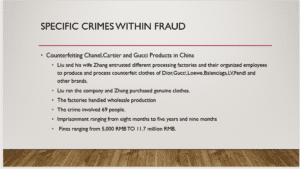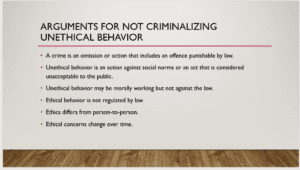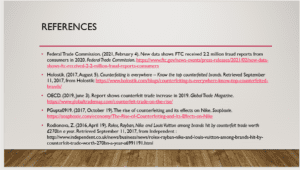Cybercrimes – Fraud and Counterfeiting
Hello, welcome to this presentation on cybercrimes. The presentation reviews the scope of fraud and counterfeiting crimes worldwide and specific crimes of counterfeiting and fraud that have been resolved in the past.
The scope of fraud worldwide ranges from loan fraud, government fraud, employment fraud, bank fraud, phone and utilities fraud, and credit card fraud. Loan fraud occurs when a person falsifies their loan application to increase their chances of being given a loan or using another person’s information to apply for a loan without their knowledge. Government fraud occurs when a person uses the identity of a government agency to commit fraud. For instance, a person can use a government’s name in employment scams to acquire money from interested job applicants. Employment fraud is the attempt to defraud job seekers by giving them false hope of better working conditions, better employment, higher wages, respectable tasks, and future opportunities. Phone and utility fraud occurs when a utility customer receives a phone call from a scammer pretending to be from their utility company. The scammer instructs the customer to pay a certain amount of money to avoid being shut off due to unpaid bills. Credit card fraud occurs when an individual uses another person’s debit or credit card without authorization to fraudulently acquire property or money
In 2020, there were more than 4.7 million fraud reports worldwide. The top three reports in 2020 included imposter scams, identity theft, and online shopping, and negative reviews fraud.34% of the reported fraud cases included a loss (Federal Trade Commission, 2021). Total fraud losses in 2020 amounted to 3.3 billion and 311 median losses. The number of identity theft reports in 2020 was high, amounting to 1.4 million. 406,375 people reported that their information was fraudulently used to apply for government benefits such as unemployment insurance (Federal Trade Commission, 2021).
According to the OECD (2019), the aggregate value of global counterfeit goods is $509 billion.
European Union represents 6.8% of counterfeit trade from countries that are not members of the EU. Pirated and counterfeit goods in trade reached 3.3% in 2020(OECD, 2019).22% of the counterfeit goods are footwear,16% are clothing,13% are leather goods,12% electrical equipment,7% are watches,5% are medical equipment,5% are perfumes and cosmetics,3% are toys,2% are jewelry, and 2% are pharmaceuticals.12% of the counterfeit goods are in other industries. Pirated and counterfeit goods in trade reached 3.3% in 2020(OECD, 2019). The rise of counterfeit goods is attributed to poor governance and corruption. Some government officials protect the sale of counterfeit goods to feed other criminal activities, thus increasing the crime rate and reducing revenue. Most counterfeit goods come from Hong Kong and China because they are the most industrialized regions specializing in the production of most of the goods that are easy to counterfeit, such as footwear and clothing (OECD, 2019).
Holostik (2017) argues that around 7 to 8 % of the global trade annually is in counterfeit goods. Nike is one of the most counterfeit brands globally because counterfeit shoes cost between $5 and $200 on the counterfeit market. The aggregate loss faced by countries globally due to counterfeit goods is $600 billion (PGupta0919, 2017). Rodionova (2016) argues that 63.2 % of custom seizures of counterfeit goods are from China. A report prepared by Holostik (2017) indicates that the counterfeiting industry accounts for around 8% of the GDP in China. Turkey is the second country in the production of counterfeiting products, followed by Singapore. Other countries include Thailand, India, Morocco, the United Arab Emirates, Pakistan, and Egypt.
In the crime of counterfeiting Chanel, Cartier, and Gucci Products in China, Liu and his wife Zhang entrusted different processing factories and their organized employees to produce and process counterfeit clothes of Dior, Gucci, Loewe, Balenciaga, LV, Fendi, and other brands. Liu ran the company, and Zhang purchased genuine clothes while the factories handled wholesale production. The crime involved 69 people. The 69 defendants who were found guilty of counterfeiting were sentenced to imprisonment ranging from eight months to five years and nine months and fines ranging from 5,000 RMB to 11.7 million RMB.
The Steinhoff Fraud Case involved accounting fraud. The accused person was a single management executive. Irregularities were disclosed in the firm’s books in December 2017.PWC conducted and completed its investigations into the irregularities to reveal the fraud. Investigations began in 2015, and the crime was prosecuted in 2016. The firm was ordered to pay the Federal Deposit Insurance Corporation $625.3 million for failure to detect fraud.
One of the ethical issues in the counterfeiting of Chanel, Cartier, and Gucci Products in China case was a conflict of interest. Liu and Zheng wanted to meet their financial needs at the expense of the laws and regulations prohibiting the counterfeiting of goods. The employees working for the company also faced a conflict of interest because they knew what they were doing was wrong but wanted to retain their jobs. The couple also undermined employment by forcing employees to break the law. In the Steinhoff Fraud Case, one of the ethical issues was the abuse of power. The senior management executive abused his power to enrich himself with the firm’s money. He also put employees under pressure to manipulate figures, thus creating a conflict of interest because the employees knew what they were doing was unethical but had to do it to retain their jobs.
A crime is an omission or action that includes an offense punishable by law, while unethical behavior is an action against social norms or an act that is considered unacceptable to the public. Unethical behavior should, therefore, not be criminalized because it may be morally wrong but not against the law, and ethical behavior is not regulated by the law. Unethical behavior should also not be criminalized because ethics differ from person to person and ethical concerns change over time, unlike criminal behavior, which is universally interpreted in a similar manner. For instance, murder and theft are actions that are universally considered to be crimes.
ORDER A PLAGIARISM-FREE PAPER HERE
We’ll write everything from scratch
Question
The following crime types have similarities and differences:
• Fraud
• Counterfeiting
Research and provide 1–3 slides of statistical information concerning the overall scope of each crime category, either nationally or worldwide.

Cybercrimes – Fraud and Counterfeiting
Research and provide 2–4 slides that summarize two specific crimes within each category. Provide facts concerning the cases. This would include the crimes’ who, what, when, where, and why. Also include any other details, such as the number of computer(s) or people involved or how long it took for investigators to solve and prosecute the parties involved. Discuss any financial penalties or criminal sentencing that was imposed.
Some violations, although technically a crime, may be referred to as an administrative violation, which involves fines. There are some actions that may not be classified as a crime, such as excessive compensation for board members or excessive bonuses for managers. There are actions that are considered unethical but legal. There also may be some actions that are illegal but ethical. Provide 1–2 slides addressing the following:
• Discuss arguments for criminalizing or not criminalizing ethical or unethical behavior.
• Discuss or address any ethical issues involved in your 2 cases.


